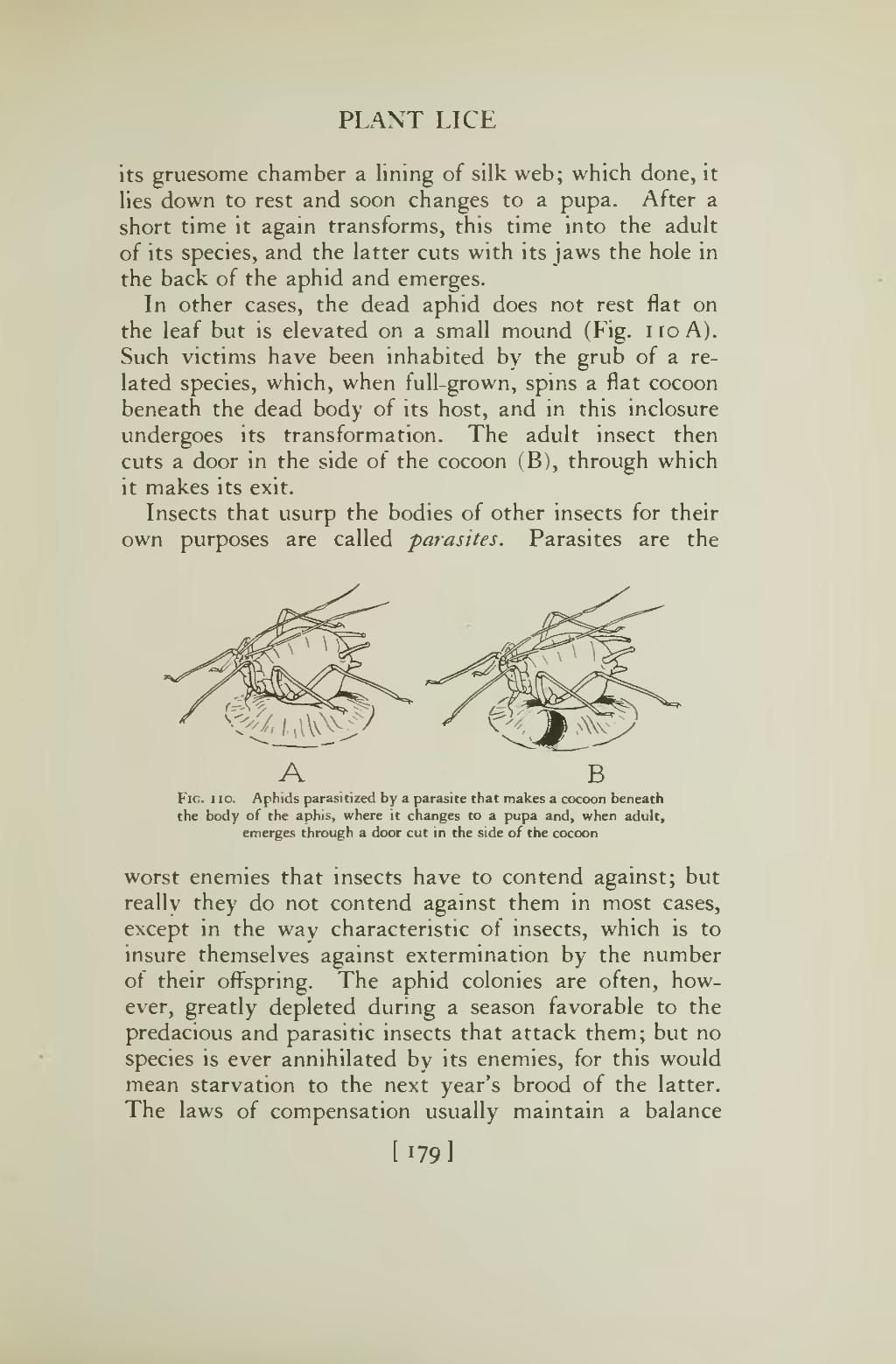LICE
its gruesome chamber a lining of silk web; which done, it lies down to test and soon changes to a pupa. After a short rime it again transforms, this rime into the adult of its species, and the latter cuts with its jaws the hole in the back of the aphid and emerges. In other cases, the dead aphid does not test fiat on the leaf but is elevated on a small mound (Fig. l IC)A). Such victims have been inhabited by the grub of a re- lated species, which, when full-grown, spins a fiat cocoon beneath the dead body of its host, and in this inclosure undergoes its transformation. The adult insect then cuts a door in the side of the cocoon (B), through which it makes its exit. Insects that usurp the bodies of other insects for their own purposes are called parasites. Parasites are the
FIc. I ?o. Aphids parasitized by a parasite that makes a cocoon beneath the body of the aphis, where it changes to a pupa and, when adult, emerges through a door cut in the side of the cocoon
worst enemies that insects have to contend against; but really they do not contend against them in most cases, except in the way characteristic of insects, which is to insure themselves against extermination by the number of their offspring. The aphid colonies are often, how- ever, greatly depleted during a season favorable to the predacious and parasitic insects that attack them; but no species is ever annihilated by its enemies, for this would mean starvation to the next year's brood of the latter. The laws of compensation usually maintain a balance
[ I79]
INSECTS
